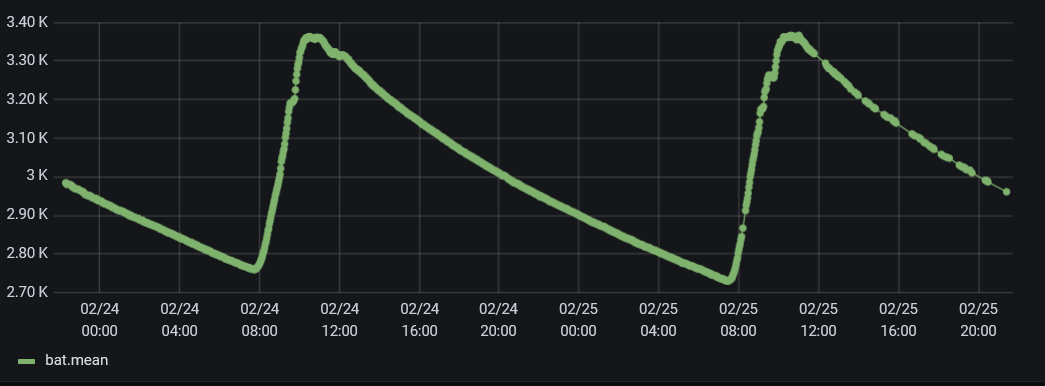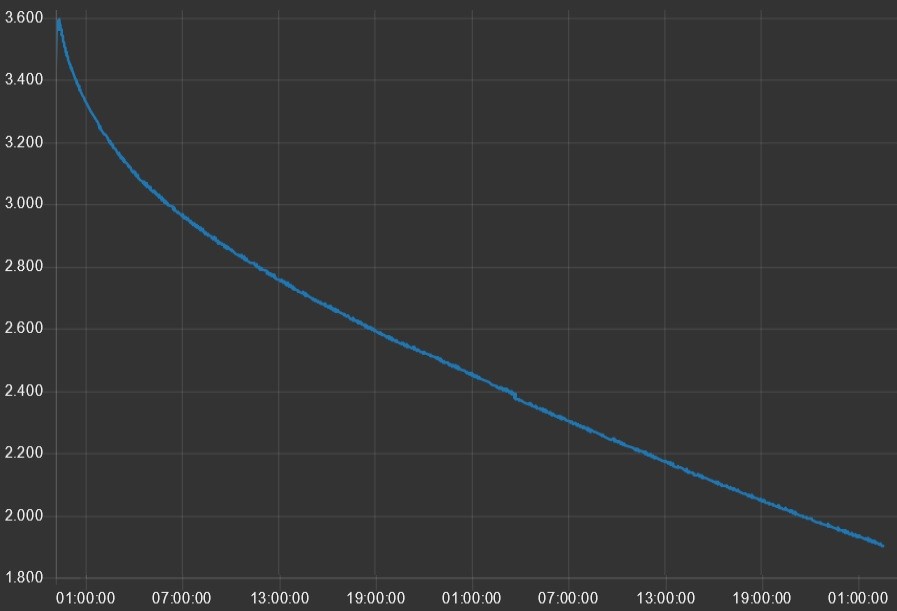Software sources can be found on GitHub: ATC_MiThermometer
Solar powered Bluetooth Thermometer with Supercap
Run Xiaomi Thermometer LYWSD03MMC with a supercapacitor and mini solarpanel.
Run Xiaomi Thermometer LYWSD03MMC with a supercapacitor and mini solarpanel.
To make the experience fit your profile, pick a username and tell us what interests you.
We found and based on your interests.
Software sources can be found on GitHub: ATC_MiThermometer
One year runtime of two devices. Blue = with supercap, Orange = with CR2032 battery
The blue curve shows the daily charge / discharge of the supercapacitor.
The battery lasts approx. one year. and needs to be replaced by april 2022.

In direct sunlight the small version of the solar panel gives max. ~3.45V (- 0.3V of the Ge-Diode)
In ambient light the voltage is about 2.5V so the supercapacitor is not fully used .... this solution is suboptimal for indoor use.
I was curious what the impact would be on the overall power consumption. I plotted a comparsion between the voltage drop via 24 MHz & 48 MHz.

Voltage drop over time (mV / hours of day)
Charged 1.5F to 3.6V and let the thermometer run with 48MHz. Advertising interval 10s, measurement is done via plotting internal ADC values.
Below 2.0 V, the LCD is barely readable, but the Bluetooth transmission still works. This small voltage gap at around 2380mV seems to occure everytime, so something must drain power at this voltage.
The case needs minor modifications to be able to connect the solar panel with wires.
Note: When viewing the LCD the wires should be exit the case on the left side. The BLE antenna is on the right and i expierenced a worse RSSI while the first attempt to exit the wires on the right side.
Just solder GND and Voltage wires a shown. Dont forget to place in a diode, this is necessary that the solar panel does not discharge the Supercap overnight.
Remove the "-" pin from the supercapacitor. And carefully bend the "+" pin down. The capacitor fits into the slot of the CR2032.
Create an account to leave a comment. Already have an account? Log In.
Hello, nice project. I did something similar regarding the supercapacitor. I think that you can easily almost double the autonomy of your system.
You could place a cheap boost converter to 5V between the panel and the cap. This way even with weak sun it will charge the cap always to 5V.
And a LDO converter after the cap to bring the voltage down to 3.3V. Then you supercapacitor will store charge between 5V down to 2V or the minimum of the clock to work. This is almost double than now.
This is amazing what can be done with a very small solar panel and supercapacitor. And parts are now very cheap.
Regards!
Become a member to follow this project and never miss any updates
Amazing project, nice work. I will suggest a Silicon Shottky diode which has a low drop voltage (as Germanium ones), but it impoves Germanium solution with high forward voltage and high-temperature stability.